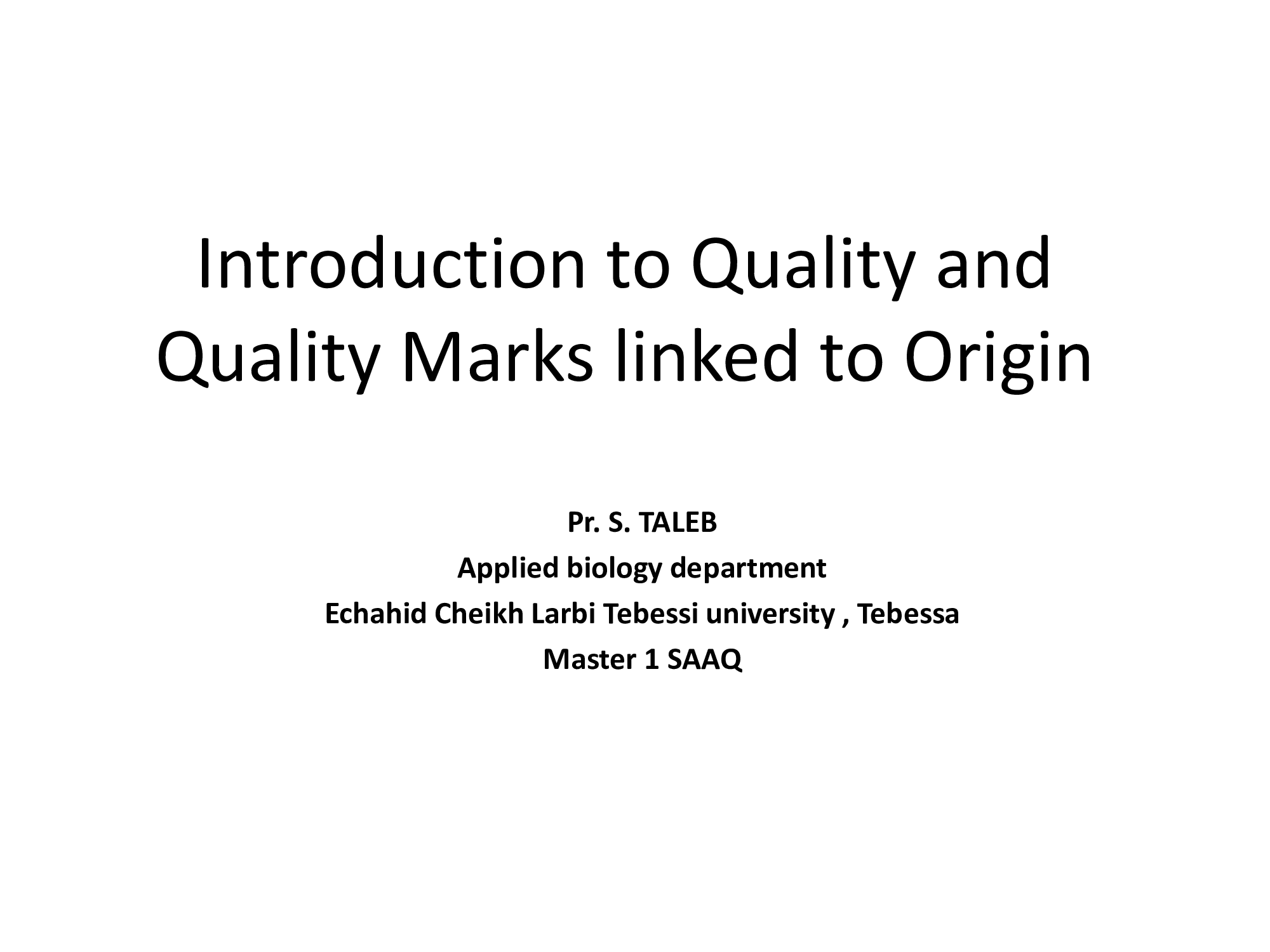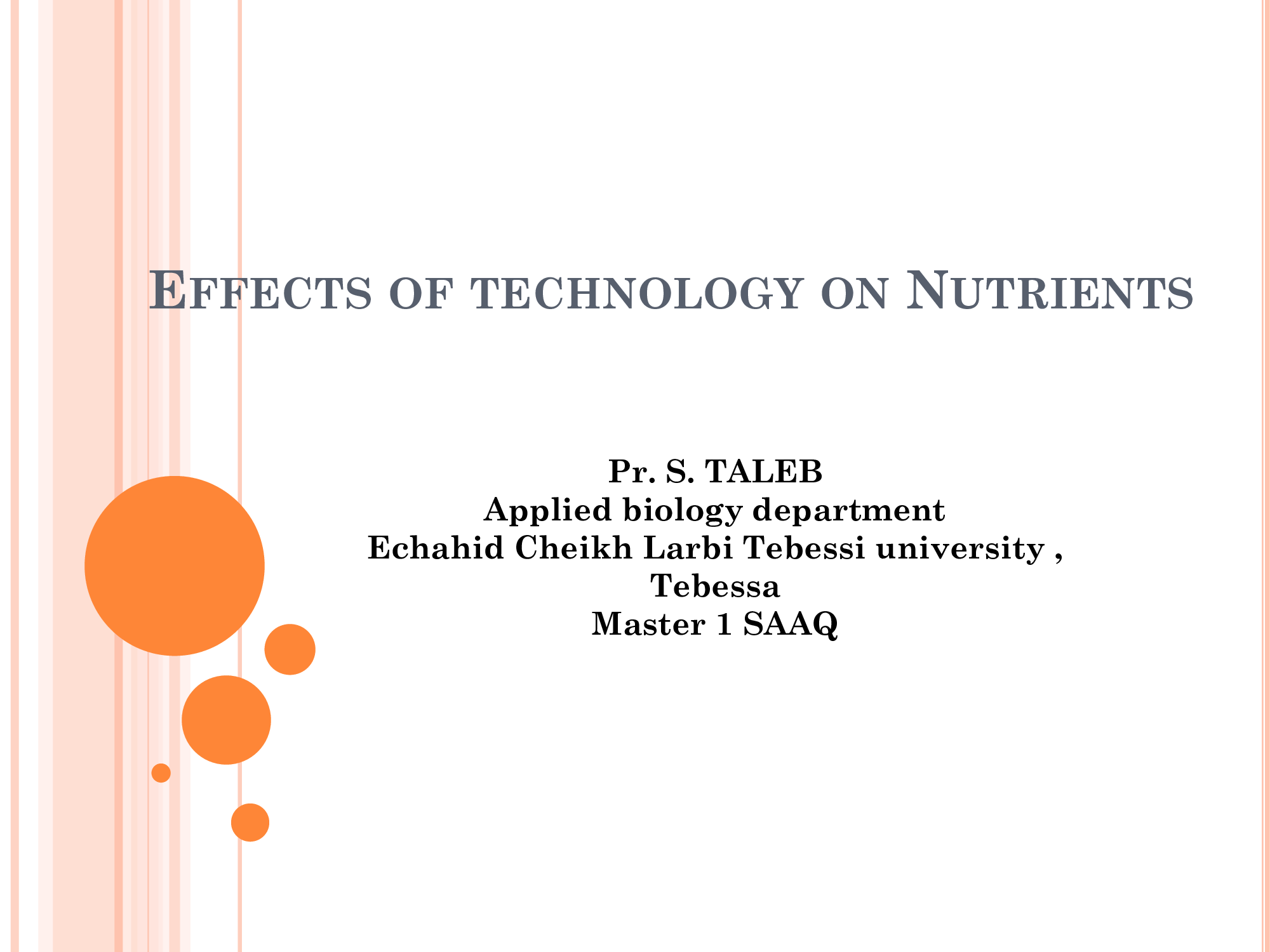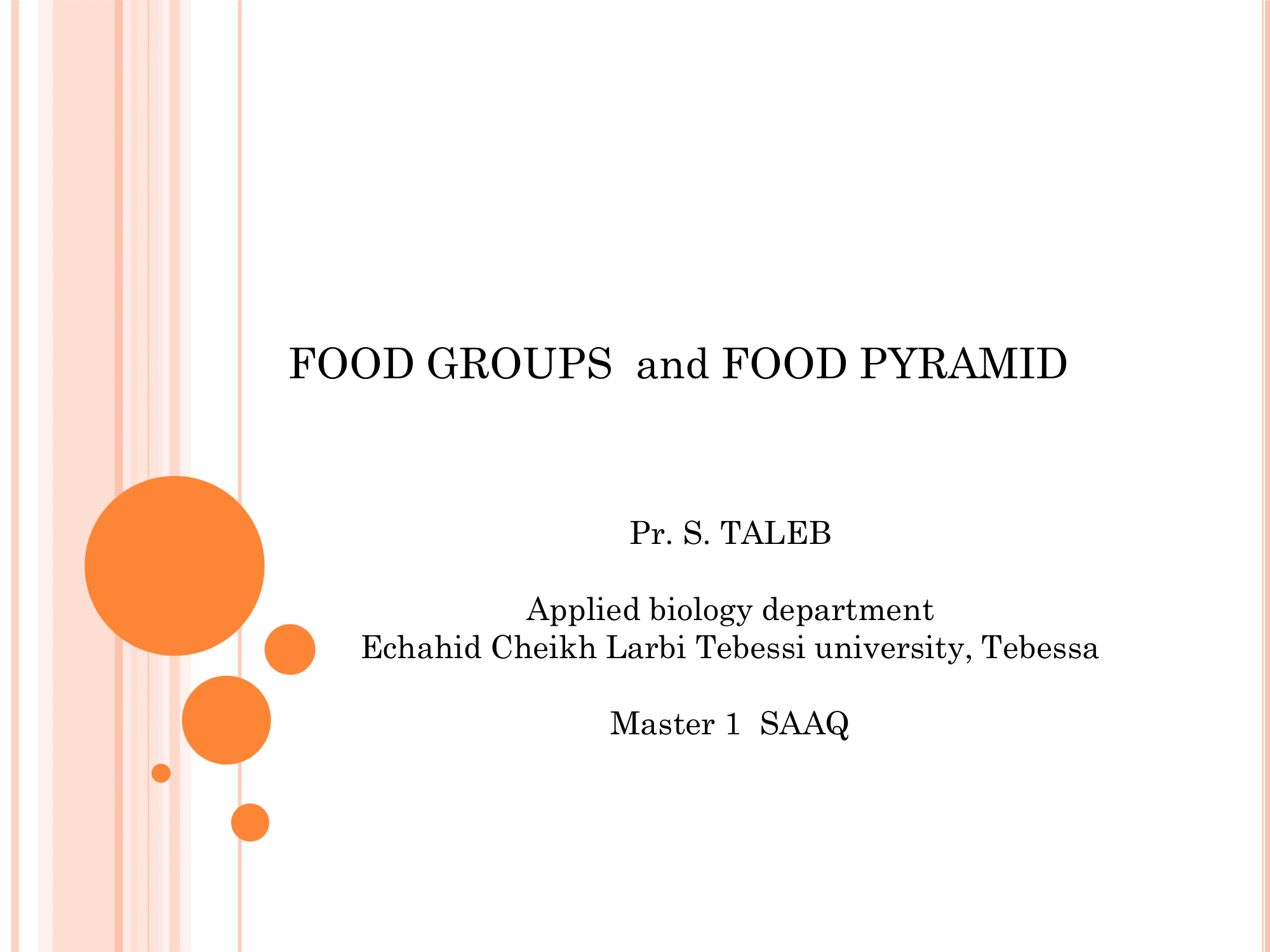Sécurité alimentaire et assurance qualité

A Certification Mark (also sometimes called the Conformity Mark, or a Mark of Validity or Assurance) is a subset of a Trademark. It is a specific mark on a commercial product, indicating that the manufacturer of the product has tested and verified strict compliance with certain prescribed quality standards while manufacturing the product. Again, any specific certification mark may also indicate the location of the origin of the product (for example, a GI Tag), the materials of production or construction, the method or mode of manufacturing, purity or accuracy, or any specific characteristics of the product.
- Enseignant: TALEB SALIMA

- Enseignant: TALEB SALIMA

All of us eat different types of food everyday There may be rice, dal, vegetables, milk, curd and fruit We already know that all of these food items provide us nutrients, required by our body for energy, body building, repair of tissues and protection from diseases Can you list the various nutrients in our food? Yes, you are aware that these are proteins, carbohydrates, fats, vitamins and minerals
In the previous lesson we have learnt that some food items are rich in protein while others may be rich in carbohydrates, fats, vitamins or minerals For example rice is a good source of carbohydrates while dal is a good source of protein.
The Food Guide Pyramid was a recognizable nutrition tool that was introduced by the USDA in 1992 It was shaped like a pyramid to suggest that a person should eat more foods from the bottom of the pyramid and fewer foods and beverages from the top of the pyramid.
- Enseignant: TALEB SALIMA

Compétences après le succès à cette matière
- Analyser les objectifs de la communication interne et externe et présenter les méthodologies nécessaires pour conduire les principales actions de communication,
- Faire communiquer avec les autres, technique de rédaction (demande, cv, …etc).
Connaissances préalables recommandées (descriptif succinct des connaissances requises pour pouvoir suivre cet enseignement ).
- Connaissance de base « langue »,
Contenu de la matière
- Renforcement des compétences linguistiques,
- Les méthodes de la Communication
- Communication interne et externe
- Techniques de réunion
- Communication orale et écrite
- Enseignant: Hanine Sara

Objectif :
-Capacité à lire et comprendre un texte de loi
-Capacité à appliquer une réglementation
Contenu de la matière :
1-Notions générales sur le droit (introduction au droit, droit pénal).
2-Présentation de législation algérienne (www.joradp.dz, références des textes).
3-Règlementation générale (loi sur la protection du consommateur, hygiène, étiquetage et information, additifs alimentaires, emballage, marque, innocuité, conservation).
4-Règlementation spécifique (travail personnel, exposés).
5-Organismes de contrôle (DCP, CACQUE, bureau d’hygienne, ONML).
6-Normalisation et accréditation (IANOR, ALGERAC).
7-Normes internationales (ISO, codex alimentarius, NA, AFNOR).
- Enseignant: Hanine Sara
